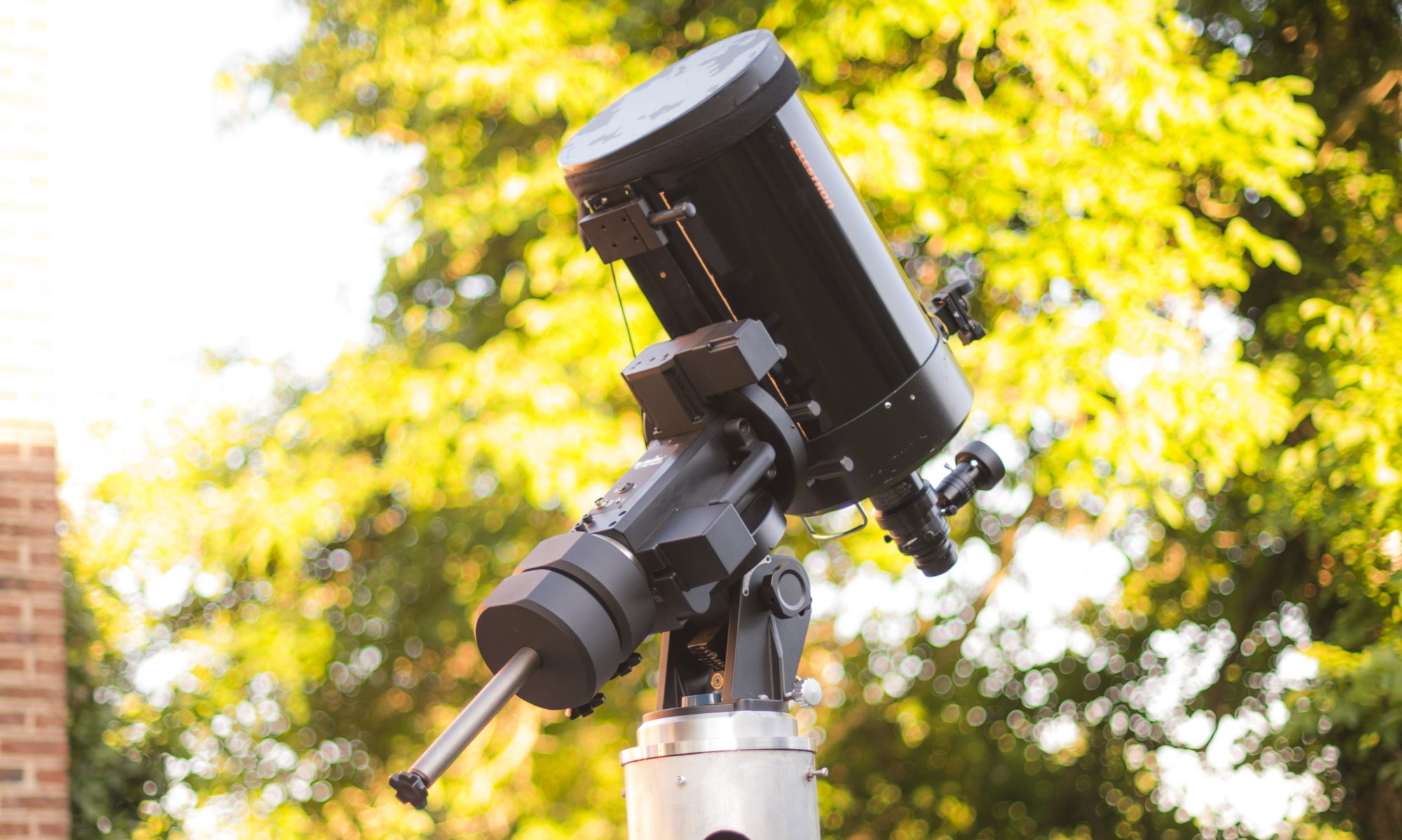For the night of September 5th to 6th, predictions were not that good: clouds passing over, some jetstream that started increasing. I had the scope outside and collimated using the tri-Bahtinov on a star of the Pegasus square in the evening, it then cooled all night .
After a few hours of sleep, I woke up to see that Mars was high in the sky looking very bright & pretty next to the Moon. It was just freed up of a cloud band that barely cleared the beautiful duo.
When I started imaging, it was obvious that the seeing was fairly good. The larger albedo structures on the planet were steadily visible on the laptop screen.
The first series prooved to be the best. it was composed of
- IR 120s @62FPS 7509 frames CM 207°
- B 120s @22 FPS 2730 frames CM 207.1°
- G 120s @40 FPS 4831 frames CM 206.6°
- R 120s @76 FPS 9188 frames CM 206.1°
with a classic C11, a unbranded 2″ barlow, a Starlight XPRESS 1 1/4″ 7-position automated filter wheel with Baader filters, an Esatto 2″ focusser and the ASI290MM




